R.J. Stowell's Blog: rjsomeone, page 3
November 2, 2021
Layla and Others
 Like the Beatles, the timing for Pattie Boyd couldn’t have been better. She wasn’t what one would call a classic beauty, but she fit the era - no one said Mod like Twiggy and Pattie Boyd. She was the British equivalent of the American “girl next door,” and she inspired three of rock’s most iconic love songs for two iconic musicians, who just happened to be best friends.
Like the Beatles, the timing for Pattie Boyd couldn’t have been better. She wasn’t what one would call a classic beauty, but she fit the era - no one said Mod like Twiggy and Pattie Boyd. She was the British equivalent of the American “girl next door,” and she inspired three of rock’s most iconic love songs for two iconic musicians, who just happened to be best friends. It was 1964. "I Want To Hold Your Hand" topped the charts, and the Beatles’ appearance on The Ed Sullivan Show set the record for the most-watched television program in American history. Capitalizing on “Beatlemania,” United Artists approached the Fab Four with a three-movie deal. Just like their records, A Hard Day's Night went on to become a major commercial success, a film that is considered nearly 60 years later one of the greatest films of the modern era.
But the Beatles' first feature film didn't just bring them fame and fortune — it also brought them love. While shooting scenes for the movie, one of the extras took a particular shine to George Harrison. Her name was Pattie Boyd, a 20-year-old British model regularly captured on the cover of Vogue as the embodiment of Swingin’ London.
The meeting is a romantic one. Harrison was equally taken by his newfound admirer and on the set asked, "Will you marry me?" With her refusal, he responded: "Well, if you won’t marry me, will you have dinner with me tonight?" Cut to an evening at the Garrick Club in central London that quickly led to a brief engagement. Harrison and Boyd wed on January 21, 1966 with Paul McCartney serving as best man.
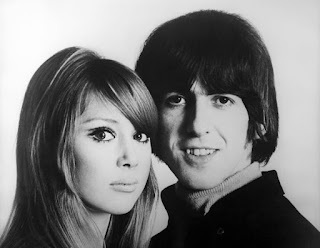 Harrison credited Boyd for significantly broadening his worldview, which included his adoption of Indian lifestyle practices and Eastern mysticism. Boyd, a passionate photographer, also served to expose a more intimate side of Harrison to Beatles fans, as her personal photos of the guitarist were widely circulated at the time. Their relationship inspired a handful of Beatles hits, including "I Need You," "Love You To," and "For You Blue." But perhaps the most iconic song spawned from Harrison and Boyd's love was "Something" from Abbey Road, arguably one of the greatest Beatles songs of all time.
Harrison credited Boyd for significantly broadening his worldview, which included his adoption of Indian lifestyle practices and Eastern mysticism. Boyd, a passionate photographer, also served to expose a more intimate side of Harrison to Beatles fans, as her personal photos of the guitarist were widely circulated at the time. Their relationship inspired a handful of Beatles hits, including "I Need You," "Love You To," and "For You Blue." But perhaps the most iconic song spawned from Harrison and Boyd's love was "Something" from Abbey Road, arguably one of the greatest Beatles songs of all time. The relationship lasted through the Beatles’ tenure but due to spiritual differences and Harrison’s increasing drug use, Pattie let George’s best friend and fellow guitarist, Eric Clapton, get closer and closer. Equally romantic, Clapton wrote a cryptic and anonymous love letter signed simply, “E.” Later at a party, he asked if she’d gotten his message.
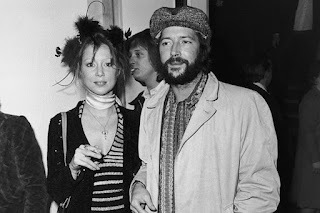 Now it gets dramatic. Torn between the two men, Boyd was approached by Harrison who, sensing the situation, asked who she was going home with that night. Boyd agreed to stay with Harrison, driving Clapton into depression, heroin addiction, and a three-year hiatus from music, though in an effort to nullify his unrequited feelings, Clapton wrote "Layla," a play on The Story of Layla and Majnun in which a young man is driven mad by an unattainable love.
Now it gets dramatic. Torn between the two men, Boyd was approached by Harrison who, sensing the situation, asked who she was going home with that night. Boyd agreed to stay with Harrison, driving Clapton into depression, heroin addiction, and a three-year hiatus from music, though in an effort to nullify his unrequited feelings, Clapton wrote "Layla," a play on The Story of Layla and Majnun in which a young man is driven mad by an unattainable love. Boyd’s marriage to Harrison ended in 1977 with George’s romantic tryst with Ringo’s wife. (I said there was drama), and this time as Clapton’s advances were successful.
Boyd married Clapton in 1979 and became yet another legendary musician's muse. Both "Bell Bottom Blues" and "Wonderful Tonight" were inspired by Boyd, yet, even more drama, the good times wouldn't last. The couple began drinking heavily and infidelity and drug use followed suit. By the 80s, the couple was on the outs. Boyd divorced Clapton in 1989, citing his affairs and "unreasonable behavior." She called Eric’s love “infatuation” and added that "Eric just wanted what George had." While Pattie remains torn over her two great loves, men that wrote some of rock’s most iconic songs just for her, but it’s George who remains the love of her life.
October 26, 2021
In 1971, Paul McCartney had his first solo No. 1 single w...
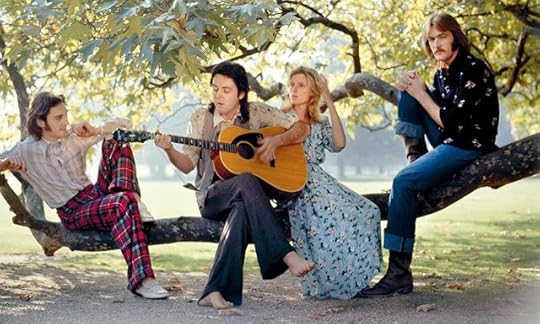
In 1971, Paul McCartney had his first solo No. 1 single with “Uncle Albert/Admiral Halsey,” from the Ram LP. The track alluded to the Beatles montage of Abbey Road, a format that emerged again with “Band on the Run,” an ingenious ploy to effectively string together bits of incomplete songs. It was on Ram that he collaborated with (a reluctant) Linda and American drummer Denny Seiwell. The remainder of the instrumentation was by session musicians and the industry’s best, including bassists Ron Carter and Richard Davis. Famous session musician Richard Spinozza was recruited by Linda despite what was, at the time, the exorbitant session fees required by Spinozza - $1500.00 per session (when the going rate was $90.00). When Linda made the phone call to Spinoza, he didn’t even know who she was (reportedly saying “Who?”), nor the fact that Linda was married to one of the world’s most iconic musicians. He said, “Like I was supposed to know that Paul McCartney was calling my house.” While it seemed like McCartney would go the route of the Beach Boys utilizing the industry’s top session musicians, in the summer that year, ex-Moodie guitarist Denny Laine joined Linda and Denny Seiwell to form the band Wings. McCartney said of the venture, “Wings were always a difficult idea … any group having to follow the Beatles’ success would have a hard job … I found myself in that very position.” That said, and with McCartney (and Wings) rising to the top, it was tough for Paul to simply move on. Linda said at the time, “He’s talking about money now. That’s one of his pet points. He’ll never stop. Denny and Denny are protesting, but there’s nothing I can do.” It’s funny that we look toward Paul and Linda as rock’s perfect couple, dismissing that even the most loving relationships have their rocky roads. “Please get him on to talking about Wings,” she said. “That’s why we are here after all. The others can’t join in talking about The Beatles. I wish he wouldn’t go on like he does. There’s really no stopping him.”While Linda was a reluctant participant in the Ram sessions, the album features Paul and Linda’s harmonies. Linda, while possibly not the best singer, oddly complimented Paul to create a sound unique to the band that would become Wings. John and Ringo noted an oblique dislike for the LP, particularly John who retaliated for songs like “Dear Boy” and “Too Many People” with his scathing “How Do You Sleep.” (I’m so glad that at 12 years old, I didn’t know any of this.) While George had no comment on the album, George Martin said, “I don’t think Linda is any substitute for John Lennon,” in retrospect a bit naïve.One of the projects that may have refocused Paul on moving forward was Thrillington, an unusual concept piece for its time. Thrillington is the orchestral version of Ram and one that many McCartney fans aren’t aware exists. The sessions for the instrumental album were June 15, 16, and 17 at Abbey Road, just two weeks after the release of Ram. The directive came for the studio to hire the country’s best classical musicians, with Tony Clark and Alan Parsons (Engineer and Assistant) questioning what Paul would be doing. Interestingly, Paul didn’t sing on the LP or play a single note, acting solely as the LPs producer. It was the kind of focus that Paul had had with the Beatles, particularly on Sgt. Pepper, but served better as a delineation of Beatles and Wings. McCartney isn’t credited with Production on the liner notes; instead, he’s listed as Percy “Thrills” Thrillington.It’s fun to note that of the Beatles in 1971, up to the release of (and possibly including Ram), Paul was the least successful of the solo acts. John had the critical acclaim of Plastic Ono Band and the commercial success of Imagine, George had the phenomenal All Things Must Pass and Ringo had one of the year’s great pop songs with “It Don’t Come Easy.” Paul’s McCartney was critically panned and the concert staple “Maybe I’m Amazed” would not initially be popular. Paul, of course, would become the most successful Beatle in both the 70s and 80s, but subsequently said of early 1971, “I felt like I didn’t have a use anymore. I’d been a bass player, and I’d been a co-writer with John, and suddenly, all of that was taken away. And I just thought, “Am I any good on my own?” Wow, huh? All of that, of course, would change for Paul after Ram and Thrillington, when McCartney found himself a new foursome in Wings.
October 21, 2021
Zeppelin and Tolkien
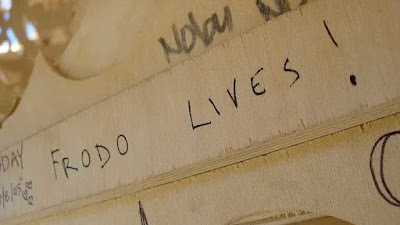 Who could have known that when John Ronald Reuel Tolkien first published The Hobbit in 1937, the book would serve as a pillar of rock history? It seems the Elven-kings and queens, the bearded, pipe-smoking wizards, and the laid-back, fun-loving Hobbits played well with the Flower Children who sought to reconnect with nature in a rather romantic way but embracing fantasy rather than Shelley or Byron.And, what about the influence the other way around? When The Hobbit, its popularity was apparent but, oddly, it took Led Zeppelin to launch Middle-Earth into a full-scale revival that far-exceeded the original publication. Not readily apparent on LZ’s debut, Page and Plant were nonetheless fascinated with European and Middle-Eastern mythologies, influences that can be heard in their most iconic works, from “Immigrant Song” to “Kashmir.” Tolkien’s influence on Plant first appeared on Led Zeppelin II, in which the singer alluded to Frodo Baggins’ journey in “Ramble On”. While the track is vague at first with its references to Middle-Earth, it culminates with the line: “T’was in the darkest depth of Mordor/ I met a girl so fair,/ But Gollum, the evil one crept up/ And slipped away with her.”
Who could have known that when John Ronald Reuel Tolkien first published The Hobbit in 1937, the book would serve as a pillar of rock history? It seems the Elven-kings and queens, the bearded, pipe-smoking wizards, and the laid-back, fun-loving Hobbits played well with the Flower Children who sought to reconnect with nature in a rather romantic way but embracing fantasy rather than Shelley or Byron.And, what about the influence the other way around? When The Hobbit, its popularity was apparent but, oddly, it took Led Zeppelin to launch Middle-Earth into a full-scale revival that far-exceeded the original publication. Not readily apparent on LZ’s debut, Page and Plant were nonetheless fascinated with European and Middle-Eastern mythologies, influences that can be heard in their most iconic works, from “Immigrant Song” to “Kashmir.” Tolkien’s influence on Plant first appeared on Led Zeppelin II, in which the singer alluded to Frodo Baggins’ journey in “Ramble On”. While the track is vague at first with its references to Middle-Earth, it culminates with the line: “T’was in the darkest depth of Mordor/ I met a girl so fair,/ But Gollum, the evil one crept up/ And slipped away with her.”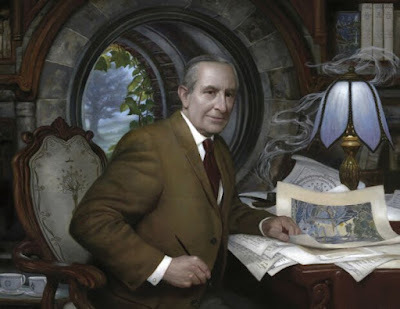 In 1971, the Led Zeppelin lyricist further pursued his passion towards Tolkien’s oeuvre with the track “Misty Mountain Hop”, where Plant’s cryptic references to The Hobbit coalesce with the description of a young man’s experience in mind-altering substances. Like Alice in Wonderland, of course, Tolkien’s epic was a mess of hallucinogenic imagery, and, as I’ve posted before, “The Battle for Evermore” was Plant enmeshing Middle-Earth with traditional English and Scottish folklore in lyrics like “The dark Lord rides in force tonight" and "I’m waiting for the angels of Avalon.”On Houses of the Holy, the journey from Hobbiton continues in “Over the Hills and Far Away,” a title borrowing from Tolkien’s 1915 poem of the same name. In it, Plant refers to several events taking place in the book, one of them a riddle game played by Bilbo and Gollum. Another important link featured is when the One Ring is referred to as a woman, not far removed from Frodo, Sam, and Aragorn referring to the “beautiful lady,” or Gollum calling it “My Precious,” as if the ring was a living being.Tolkien, by the way, said of Plant’s tributes, “You certainly have my permission to compose any work that you wish based on The Hobbit. … As an author, I am honored to hear that I have inspired a composer.”
In 1971, the Led Zeppelin lyricist further pursued his passion towards Tolkien’s oeuvre with the track “Misty Mountain Hop”, where Plant’s cryptic references to The Hobbit coalesce with the description of a young man’s experience in mind-altering substances. Like Alice in Wonderland, of course, Tolkien’s epic was a mess of hallucinogenic imagery, and, as I’ve posted before, “The Battle for Evermore” was Plant enmeshing Middle-Earth with traditional English and Scottish folklore in lyrics like “The dark Lord rides in force tonight" and "I’m waiting for the angels of Avalon.”On Houses of the Holy, the journey from Hobbiton continues in “Over the Hills and Far Away,” a title borrowing from Tolkien’s 1915 poem of the same name. In it, Plant refers to several events taking place in the book, one of them a riddle game played by Bilbo and Gollum. Another important link featured is when the One Ring is referred to as a woman, not far removed from Frodo, Sam, and Aragorn referring to the “beautiful lady,” or Gollum calling it “My Precious,” as if the ring was a living being.Tolkien, by the way, said of Plant’s tributes, “You certainly have my permission to compose any work that you wish based on The Hobbit. … As an author, I am honored to hear that I have inspired a composer.”
October 20, 2021
Tarka the Otter - No, Tarkus
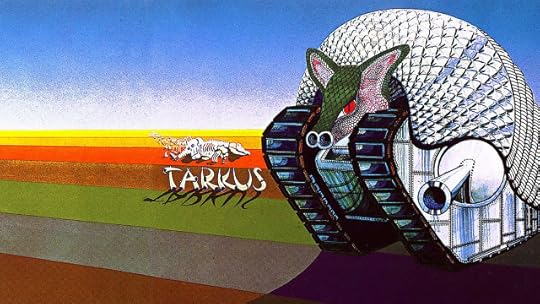
Hindsight often shines a light on delightful accidents. From Malcolm McDowell’s “Singin’ in the Rain” improv in A Clockwork Orange to Kurt Cobain’s quandary over “Kurt Smells Like Teen Spirit” written on a friend’s wall in Sharpie*, sometimes things just happen.
It may seem hard to fathom now, but back in 1971, Emerson, Lake and Palmer were forced by their label to shelve the prog-rock adaptation of Mussorgsky’s Pictures at an Exhibition in favor of “Tarkus” because the latter was more commercial; that’s right, a sci-fi piece in which an audacious tank-like armadillo pops out of a volcano and heads off to war is more “commercial.” (Yeah, it’s a regular “Sugar, Sugar.”) It’s as goofy a concept as one can imagine, nonetheless one of the greatest of all prog epics thanks to Lake’s brilliant lyrics somehow adding the verisimilitude the concept required.
The band’s self-titled debut from the year prior included some pretty spectacular performances, if a bit uneven, but keep in mind that this (1970) was progressive rock’s infancy, and much of what was recorded by Gentle Giant and Yes, Floyd and Genesis was experimental. Tarkus was Emerson, Lake and Palmer’s opportunity to address the criticisms of the eponymous LP (I have few, btw; love that debut!).
The title track, with its seven movements, was a bold step that succeeds due to Emerson’s compositional deftness. Of it, he said, “It was coincidental that Carl Palmer and I were working individually on the same sort of complex rhythm ideas. He was doing this on his practice drum pads, while I was at home on an upright piano in London and a Steinway in Sussex. As my ideas seemed to compliment what Carl was up to, I pursued this direction.
“We focused on a centerpiece first to establish a concept. Sometimes we didn’t know if it would become a conceptual piece of work at all. All of the compositions had to bond and work together, and if they didn’t, they were used somewhere else.”
Emerson drew heavily on the work of Frank Zappa and the Argentinian classical composer Albero Ginastera, well known to ELP fans as the composer of “Toccata” on Brain Salad Surgery. “I was a huge admirer of Frank Zappa, and had met him on a few earlier occasions when he wanted my advice on how to cope with English orchestras. Frank was of the opinion that there really should not be time signatures. That’s how I felt. Why be governed and dictated to by a 4⁄4 or 3⁄4 rhythm by adding or subtracting notes just to make it fit?”
After several months, Emerson presented the bones of the composition to Palmer and Greg Lake. All that was missing were the lyrics. Lake wasn’t initially a fan of what he heard while Palmer, in simpatico with Emerson, was already on board. “I don’t think Greg was too enthused,” Emerson said. Indeed, Lake was heard to say, "If you want to play that sort of stuff, I suggest you play it on your solo album."
Nonetheless, gritting his teeth, Lake took inspiration from the album’s artwork as the starting point for his lyrics serving up some of the most potent lyrics of his career. Emerson, for his part, vividly remembers the first time he saw the cover that became so entwined with the album and the concept story. “One day I walked into the studio after my long drive from Sussex. Greg and Carl were looking over the artwork of an artist that had just dropped by [William Neal]. We were all fascinated by his artwork, particularly the armadillo with cannons and the dodo bird with guns on its wings like a Spitfire. To everyone, it represented what we were doing in that studio. The next day on my drive up from Sussex the imagery of the armadillo kept hitting me. It had to have a name. Something guttural. It had to begin with the letter ‘T’ and end with a flourish. Tarka the Otter [a children’s novel published in 1927] may have come into it, but this armadillo needed a science fiction kind of name that represented Charles Darwin’s theory of evolution in reverse. Some mutilation of the species caused by radiation… Tarkus!”
The 20+ minute title track is monumental. As the first significant side-long prog-rock epic, the track has it all - amazing keywork by Keith Emerson that fits seamlessly from movement to movement, a gorgeous electric guitar solo from Greg Lake, lyrics that refocus an otherwise silly storyline, intricate bass, and incomparable drumming by Palmer. Bottom line, like Floyd’s miraculous “Echoes,” “Tarkus” is a brain-fry bong-load of resinous prog, dripping with cosmic ether.
Anyway, “more commercial?” Guess the folks at Island Records were right.
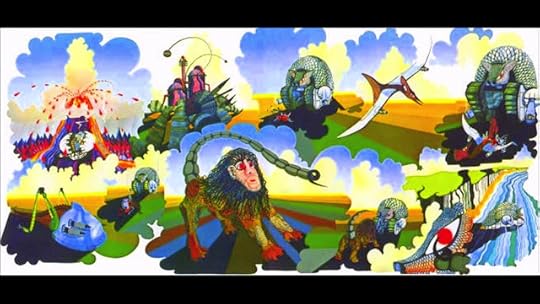
October 7, 2021
Madman at 50
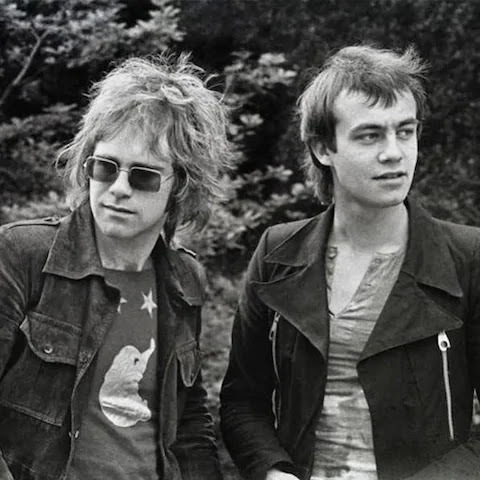
Not making a judgment call (okay, I am), by October 1971, Elton John was poised to release his 5th LP in 18 months (as opposed to, say, Adele, who names her albums based on her age – 19, 21, 25 – with the next release tentatively titled 63. The Beatles, by comparison, had released all eleven LPs of their career in less time). During the summer, Elton's timeless melodies coupled with Bernie Taupin’s romantic pen would produce his most vital entry thus far (building on the seminal Tumbleweed Connection), Madman Across The Water.
From the LP would emerge two iconic tracks, "Levon" and "Tiny Dancer." Sessions for Madman began in February, just as the Friends soundtrack was released. Tumbleweed Connection is, for this writer, sweeping Americana, the musical equivalent to Terrence Mallik’s Days of Heaven or Edward Hopper’s "House By the Railroad." And Madman was a bit more of the same on a far broader landscape. The February sessions produced two tracks, "Levon" and "Goodbye," before a summer return to complete the album.
For all the assumptions about "Levon," as we came to learn, it wasn't named after The Band's Levon Helm, despite Elton and (especially) Bernie's adoration of their music. Taupin just liked the name – the same reason that the character calls his son in the narrative Jesus. "It was free-form writing," Taupin told Rolling Stone in 2013. "It was just lines that came out that were interesting." "Levon," of course, would pick up on the New York Times' controversial headline, "God Is Dead," a rather telling statement of the times. "He was born a pauper/ To a pawn on Christmas Day/ When The New York Times/ Said 'God Is Dead' and the war's begun/ Alvin Tostig has a son today."
Since the band wouldn't head back to the studio for several months, we have time to digress: Like other rock 'n' roll conundrums (like the "pompatus of love" from Steve Miller's "The Joker," or the "warm smell of colitas" from the Eagles' "Hotel California," the question arises, Who the hell is Alvin Tostig? Don’t bother to look it up, the answer is within the song. Alvin Tostig is simply Levon’s father. Nothing more to it.
Back to our focus. In a 1973 interview, Taupin said that "Tiny Dancer" is about his first wife, Maxine Feibelman, who was, indeed, a dancer. Thus, by singing those words, Elton appeared to be describing his own world when he was actually depicting Bernie's. The track featured the U.K.'s most accomplished pedal steel guitar player, BJ Cole. While the song, at over six minutes, wasn't radio-friendly, like "MacArthur Park," it defied the standard and was certified Gold in the U.K. and triple-Platinum in the U.S.
Rick Wakeman played on three Madman Across The Watertracks, including the brooding title tune (an earlier version of the song, featuring guitarist Mick Ronson, dated from the Tumbleweed Connection sessions.) Wakeman's other contributions include "Razor Face," with its memorable Wurlitzer organ and and "Rotten Peaches."
During the summer, Davey Johnstone joined in with "Rotten Peaches" on acoustic guitar, as well as on the album's title track and "Tiny Dancer." He added mandolin and sitar on "Holiday Inn." Also making his first appearance on an Elton album, on three tracks was the inimitable session and touring percussionist Ray Cooper.
Elton's colleagues in that line-up, bassist Dee Murray and drummer Nigel Olsson, didn't play on Madman Across The Water, though they were part of a team of backing vocalists that also included friends of the band: Lesley Duncan, Tony Burrows, Roger Cook, Sue & Sunny, Barry St John, Liza Strike, and Terry Steele.
The key to Madman Across the Water is melodrama and iconic characters drench in paranoia but rising above it, a romanticism that John and Taupin could create like no one else.
September 27, 2021
Goo Goo Ga Joob, etc.
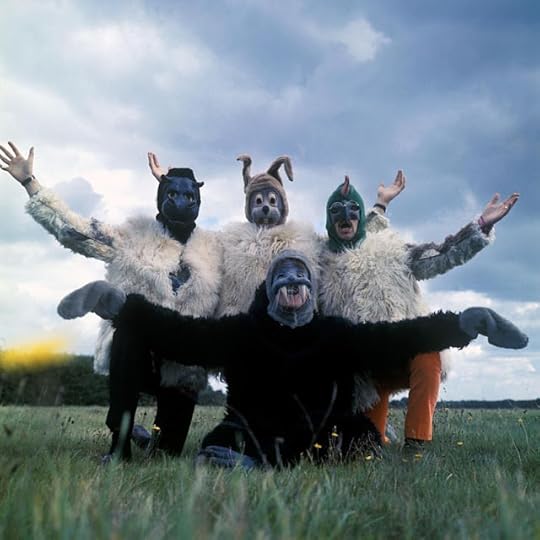
On several occasions, recently and in the past, I've fallen victim to the English teacher within me who still rears its head in the moonlight. AM’s last post explored the influence of Shakespeare, rock star that he was, on everyone from Dylan to Thom Yorke. And today, we tackle literature. A few months back it was The Decemberist’s “The Crane Wife” and Derek and the Dominos' "Layla," here, for your consideration, a few others:I have a love/bored relationship with U2. In 1981, with the release of October, U2 toured the States and I was lucky enough to see them at the Hollywood Palladium, where my little cohort asked The Edge if he’d put us on the guestlist the following night (there’s a connection there that I will relate at another date). In a leap of faith that included a wild road trip in the middle of the night, we headed off to San Francisco. I know the exact date because it was the night Natalie Wood died (November 29, 1981). The Edge came through with backstage passes and we stood at the edge of the proscenium to watch the show, but not until we'd played nerf basketball with Adam and Bono with a waste can on top of a filing cabinet. A big fan of Lord of the Flies, when Bono came to the wings and handed me his flight vest, I said, "Can you do 'Shadows and Tall Trees.'" He shook his head and gave me a look that said, "Nah." They haven't done the song since 1980. The song is based on chapter 7 of the William Golding novel in which Simon, the novel's Christ-figure, assures Ralph and the boys that there is always hope. (The bored part of my U2 relationship: everything after that point.)I am a great aficionado of the four great Regency-era novels, Pride and Prejudice, Vanity Fair, Jane Eyre, and that hot mess, Wuthering Heights. Having grown up with the incredible film from 1939, I had no idea that the movie nixed the second half of the book, and in essence, Kate Bush does the same thing with her first worldwide (except in the U.S.) No. 1 smash that established her career. The imagery and focus that comes to my mind is Cathy in chapter three reaching through the broken window, her cold, dead hand grasping Mr. Lockwood (oh, sorry about the spoiler). Heathcliff in all his passion bursts into the room calling after her. Windows as barriers or as portals into other worlds are something that scholars of Bronte have studies these past 200 years, a feature that Kate captures succinctly in her adaptation. At the film's end and throughout the song, it's not Lockwood, of course, but Heathcliff who answers her call – "Heathcliff, it's me, I’m Cathy, I've come home and I'm so cold – Let me in your window!"The Alan Parsons Project take on Poe remains one of my favorite progressive LPs, but Stevie Nicks tackled "Annabelle Lee" when she was just 17 (circa 1965). "We have a song I wrote when I was 17 that is the words to an Edgar Allan Poem called 'Annabel Lee.' It's just lived in my head since I was 17." Like Wuthering Heights, Poe’s 1839 poem is about love transcending death.Alice's Adventures in Wonderland are a common allusion in the songs from a myriad of artists from Jefferson Airplane (of course) to Tom Waits ("Alice.") The Beatles' "I Am the Walrus," pretty much a trip down the rabbit hole in general, doesn’t stop with Alice but tackles James Joyce as well with "Goo goo ga joob" lifted from Finnegan's Wake.
September 5, 2021
Crosby, Stills & Nash (& Young)
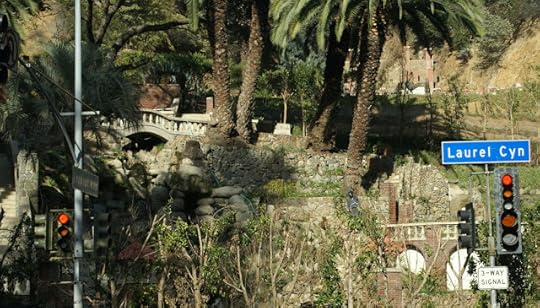 In April 1970, Joni Mitchell released her third LP, Ladies Of The Canyon, an ode to the denizens of the enclave she called home, Laurel Canyon, a mountainside oasis hidden within the confines of L.A. The title track is perhaps the most obvious tribute in which Joni characterizes three women who define the canyon as a geographical and sociological oddity, a jumble of largely undeveloped mountain acres adjacent to the busy streets of West Hollywood. By 1968, when Mitchell wrote the song, the neighborhood had become the center of the local music scene, though it boasted no clubs or venues. Nearly every Los Angeles musician lived there, jammed there, or crashed on someone's couch there: The Byrds, The Mamas & the Papas, Crosby, Stills, Nash and sometimes Young, The Beach Boys, The Doors, Love, The Monkees, Frank Zappa, Jackson Browne, Canned Heat. With its steep hills, winding dirt roads, and a handful of manmade caves strung with lights (for anyone who wanted to get back to the land or had run out of couches), the canyon provided a refuge from Los Angeles' hard urban landscape, and it was here that Joni and Crosby, with the coaxing of Cass Elliot, met Stills and Nash.
In April 1970, Joni Mitchell released her third LP, Ladies Of The Canyon, an ode to the denizens of the enclave she called home, Laurel Canyon, a mountainside oasis hidden within the confines of L.A. The title track is perhaps the most obvious tribute in which Joni characterizes three women who define the canyon as a geographical and sociological oddity, a jumble of largely undeveloped mountain acres adjacent to the busy streets of West Hollywood. By 1968, when Mitchell wrote the song, the neighborhood had become the center of the local music scene, though it boasted no clubs or venues. Nearly every Los Angeles musician lived there, jammed there, or crashed on someone's couch there: The Byrds, The Mamas & the Papas, Crosby, Stills, Nash and sometimes Young, The Beach Boys, The Doors, Love, The Monkees, Frank Zappa, Jackson Browne, Canned Heat. With its steep hills, winding dirt roads, and a handful of manmade caves strung with lights (for anyone who wanted to get back to the land or had run out of couches), the canyon provided a refuge from Los Angeles' hard urban landscape, and it was here that Joni and Crosby, with the coaxing of Cass Elliot, met Stills and Nash.Quintessentially Californian, The Byrds were each refugees from folk bands. Roger McGuinn was a third of the Chad Mitchell Trio, Gene Clark a New Christy Minstrel; Chris Hillman played mandolin in The Hillmen, and David Crosby was an outspoken folk singer. The group lived and practiced in Laurel Canyon, their rehearsals reverberating across the sandstone hills and decorated caves. After dark, the nightcrawlers would descend on the Sunset Strip to play Ciro's, The Troub and the Hullabaloo. The Byrds were the house-band at the Whiskey (alongside The Doors), and at It's Boss, a teen club that only recently changed it's name from Ciro's (today it's The Comedy Store).
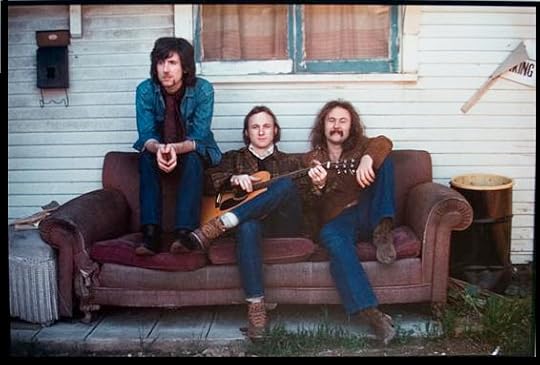
Those two settings, the remote wilderness of the Canyon and the urban bustle of the Strip, offered a contrast that defined folk rock as both acoustic and electric, country and city, harmonious and aggressive. A year before Dylan electrified the Newport Folk Festival, the Byrds had invented a new kind of pop music that mirrored the messy geography of Los Angeles, a hybrid of psychedelia, folk and country. Not long after, The Buffalo Springfield entered the L.A. scene with Stephen Stills and Neil Young fighting over the reins of the band. Graham Nash would find success with Britain's The Hollies and secure two smash American singles in "Bus Stop" and "Carrie Anne."
That night, while Joni listened, the three of us sang together for the first time. I heard the future in the power of those voices. And I knew my life would never be the same.The dilemmas each artist faced with their bands led to the formation of Crosby, Stills & Nash in 1968. They were signed to Atlantic Records and released their first eponymous album in May 1969. It did well, spawning two Top 40 singles: "Marrakesh Express" (at No. 28) and "Suite: Judy Blue Eyes" (at No. 21). The album itself went to No. 6 on the Billboard 200 album chart.
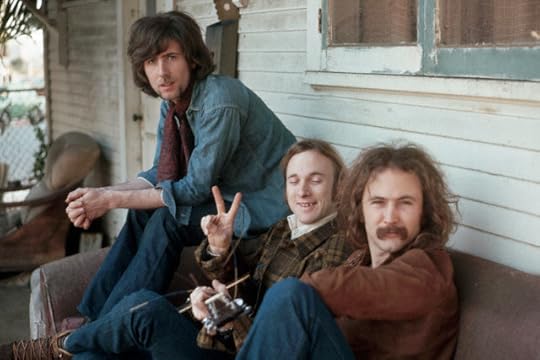
As Nash remembers, "We were all very much in love with each other; we were all very much in love with the music…obviously doing something we felt was totally unique. It was against the grain of most of the music that was out at that time, and we just managed to slip this acoustic-feeling record right through all the stacks of Marshalls and giant electric guitars." It's funny how their attitudes would fluctuate over the years, but 50 years on there's still talk of further collaborations.
When joined by Neil Young, several months later, they played for a half a million people at Woodstock in what was only their second appearance together. CSN&Y’s stirring performance exemplified the spirit of the day, and is still treasured as a touchstone for many who came of age in the ‘60s.
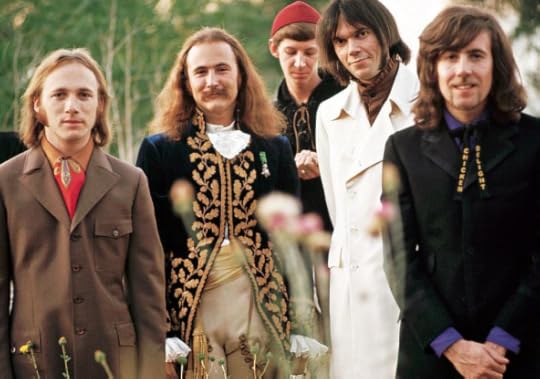 SC?YNIn 1970, CSN&Y released the now-classic album Déjà Vu to great acclaim, generating three Top 40 singles: "Woodstock" (No. 11), and Nash's smash double play of "Teach Your Children" (No. 16) and "Our House" (No. 30). It also introduced perennial favorites including Young's "Helpless," Stills' "Carry On" and Crosby's sociopolitical "Almost Cut My Hair." Next up was 1971's 4 Way Street, a double live LP that showcased both group dynamics and solo strengths, and delivered Neil Young's "Ohio," a rebellious memorial to the four students killed at Kent State in 1970. Although CSN&Y drifted apart midway through the ‘70s, they continued to perform and record, individually and in various configurations. Solo, Crosby released If I Could Only Remember My Name, and Nash followed with Songs For Beginners and Wild Tales. Together, the pair recorded three albums and in 1977 released a live LP. Stills released the platinum Stephen Stills, Stephen Stills 2,two LPs with Manassas, and Long May You Run with Neil Young, while Neil's solo career outweighed them all; today having recorded 42 studio LPs.
SC?YNIn 1970, CSN&Y released the now-classic album Déjà Vu to great acclaim, generating three Top 40 singles: "Woodstock" (No. 11), and Nash's smash double play of "Teach Your Children" (No. 16) and "Our House" (No. 30). It also introduced perennial favorites including Young's "Helpless," Stills' "Carry On" and Crosby's sociopolitical "Almost Cut My Hair." Next up was 1971's 4 Way Street, a double live LP that showcased both group dynamics and solo strengths, and delivered Neil Young's "Ohio," a rebellious memorial to the four students killed at Kent State in 1970. Although CSN&Y drifted apart midway through the ‘70s, they continued to perform and record, individually and in various configurations. Solo, Crosby released If I Could Only Remember My Name, and Nash followed with Songs For Beginners and Wild Tales. Together, the pair recorded three albums and in 1977 released a live LP. Stills released the platinum Stephen Stills, Stephen Stills 2,two LPs with Manassas, and Long May You Run with Neil Young, while Neil's solo career outweighed them all; today having recorded 42 studio LPs.August 28, 2021
EGBDF – The Moodies 50 Years Ago

Every Good Boy Deserves Favour took its title from the mnemonic for the EGBDF lines of the treble clef. It was the album that contained Justin Hayward’s impressive “The Story In Your Eyes,” a Top 30 U.S. single that was withdrawn from sale in Britain at the band’s request. But that didn’t stop the album from going all the way to the top. The Moodies had reached No.1 in the UK with On The Threshold of a Dream in 1969. To Our Children’s Children’s Children was stopped at No.2 by The Beatles’ Abbey Road, but they were not to be denied with 1970's A Question of Balance, which had three weeks at the summit.Then came Favour, which featured solo compositions by each of the five members of the band, as well as the only Moody Blues song to carry credits for the whole quintet, the opening “Procession.” Even more democratically, Messrs Hayward, Lodge, Thomas, Pinder, and Edge also shared lead vocals on the track.
The album entered the UK chart at No. 2 and moved to the top on August 14, 1971. That was the only week at No.1 for the Moodies’ album, but it proved its staying power by spending the next four weeks at No.3, and a total of nine in the Top 10. In the US, by October 1971, it went gold, continuing an impressive run in which all of their albums had achieved RIAA certification. Cashbox observed that the group and producer Tony Clarke had, in securing that sequence, “created music which has won them a wide and devoted following.”
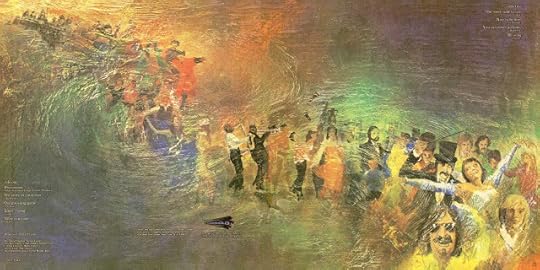
On this day, 50 years ago, “The Story in Your Eyes” a stunning rock-based track by the band's guitarist Justin Hayward, was released as a single with "My Song" on the B-side. The track was the last by the Moodies to feature the Mellotron as it would be supplanted by the Chamberlin on Seventh Sojourn. While many consider EGBDF to be the least of the “Classic Seven,” it remains for this writer a very sophisticated moment for an eleven-year-old who saved for six weeks just because I was captured by the album’s cover. Sometimes you can tell a good [album] by its cover.
The Magnificent Moodies
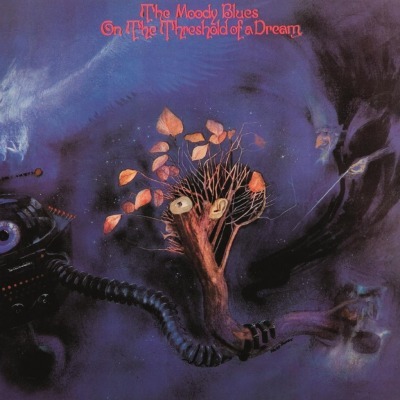 The LP, On the Threshold of a Dream, was among the first wave of album-oriented rock or AOR that would take hold in the 1970s; indeed, On the Threshold of a Dream had no hit songs despite the LP being the first release to enter into the U.S. Top 20 and a No. 1 smash in the U.K.
The LP, On the Threshold of a Dream, was among the first wave of album-oriented rock or AOR that would take hold in the 1970s; indeed, On the Threshold of a Dream had no hit songs despite the LP being the first release to enter into the U.S. Top 20 and a No. 1 smash in the U.K. In 1965, the Moody Blues had a hit with a remake of "Go Now" that was promo'd by what may be the very first MTV style video, predating even The Beatles' "Rain" and "Paperback Writer." Despite the single's success, the Moodies were struggling financially. Decca Records, hoping to further its exploration into stereophonic recordings, asked the band to do a rock interpretation of Dvorak's New World Symphony (Symphony No. 9) for the new Deram Records label. Instead the band recorded, without the label's knowledge, Days of Future Passed with Mike Pinder's "Dawn is a Feeling" as the catalyst for the project. Justin Heyward would follow with the LP's big hit, "Nights in White Satin," a play on words in which bed sheets are used as a cunning metaphor. Released in 1966, it is still my favorite Moody Blues LP and it introduced the world to symphonic interpretations of rock music.
The band would follow up with In Search of the Lost Chord, a psychedelic concept piece all about the journey. It contained no real hit but gained a lot of radio play with "Ride My See-Saw" and the biopic fantasy "Legend of a Mind," about Dr. Timothy Leary. The song is a part of an extended concept song called "The House of Four Doors," the Moodies at their finest and an incredible soiree into the psychedelic experience.
With the 3rd LP in the concept series, Threshold of a Dream, the Moodies would fully establish themselves as the first AOL rock band. Each of the LPs was meant to be listened to in its entirety; this wasn't background music. The Moody Blues were when listeners first sat on the couch and immersed themselves in the experience. What's interesting though, is that with the next few LPs, the Moodies would have their biggest hits in "Question," "The Story in Your Eyes," "I'm Just a Singer in a Rock 'n' Roll Band" and oddly, six years after its initial release, "Nights in White Satin" would make it all the way to No. 1.
On the Threshold of a Dream is an LP oozing with splash and psychedelic experimentation. The album was a runaway smash in the U.K. and provided The Moody Blues with their first No. 1 British LP, remaining on the charts for some 70 weeks.
The Moody Blues and Phil Travers

While my brother was cool enough to embrace Days of Future Passed, I didn't understand it. The songs were hidden amidst all that old people music (while my grandmother loved Nancy Sinatra's "These Boots Are Made For Walkin'," the music coming out of the Magnavox console stereo in our home was more likely Montovani and Ferrante and Teicher or 101 Strings' versions of Beethoven; and Days of Future Passed sounded more like that to me than the pop strains of Headquarters. And yet…
My brother got me In Seach of the Lost Chord for my birthday in 1968. I didn't want it, of course; he did, and he bought it in stereo so that I couldn't play it in my room and only on the Magnavox. (He got me Blood, Sweat and Tears too. Didn't want that either.) But I couldn't take my eyes off the cover, that hypnotizing painting by Phil Travers, who would work with the Moodys on six occasions. Like Hipgnosis' Storm Thorgerson and Pink Floyd, Travers was like another member of the band.
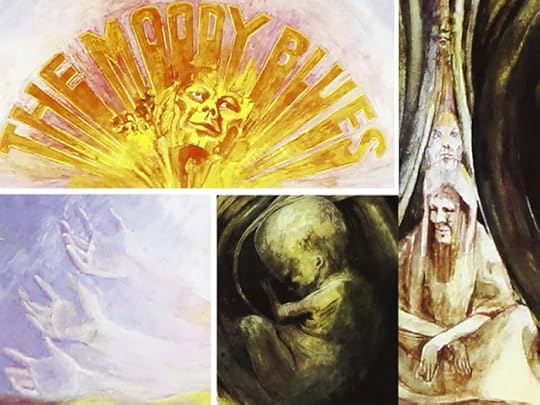
"I met the Moodys," he said, "in a London pub, and we worked out the details of the commission. They invited me down to the studio shortly after that first meeting to listen to the album. So I got an early taste for what they were doing. I liked it. And that's the way it always worked with them. I'd get to listen to the record, then discuss the themes and ideas behind it, before any art concepts were developed.
"The band wanted me to illustrate the concept of meditation. This was not something that I had much personal experience of, and so my early thoughts about the subject were, unfortunately, insubstantial. My first rough designs really reflected a lack of ideas. I began to panic a bit as time was running out, when that image I mentioned in the glass window, of a figure ascending, came back to me and everything then fell into place. I had days rather than weeks to complete the illustration, and submit it for approval. I used Gouache and some water colour to get the effect I was after."
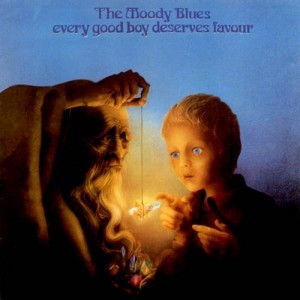 Sometimes it’s the aesthetics of an LP that sparks our interest ( I can still visualize Nancy Sinatra in her go-go boots), and while we can argue over the validity of modern music (the tepid pop charts, the insufferable rap and its lack of musicality), one of the greatest losses that I've found since the advent of the CD and now MP3s and Spotify, is the disassociation of music with the visual. In the 60s, you wanted to peel that Velvet Underground banana or unzip Jagger's Levis, you had the Dark Side post cards on your bulletin board and you displayed Goodbye Yellow Brick Road like it was artwork, only to pick it up, open it and use the gatefold to roll a joint.
Sometimes it’s the aesthetics of an LP that sparks our interest ( I can still visualize Nancy Sinatra in her go-go boots), and while we can argue over the validity of modern music (the tepid pop charts, the insufferable rap and its lack of musicality), one of the greatest losses that I've found since the advent of the CD and now MP3s and Spotify, is the disassociation of music with the visual. In the 60s, you wanted to peel that Velvet Underground banana or unzip Jagger's Levis, you had the Dark Side post cards on your bulletin board and you displayed Goodbye Yellow Brick Road like it was artwork, only to pick it up, open it and use the gatefold to roll a joint.Anyway, it was a birthday present, but it was its cover that brought my attention to the highly overlooked Moodys. In retrospect, they'd done the symphony thing and pulled it off with flying colors, but this follow-up was 100% Moody Blues. Of the 33(!) different instruments used on the LP, each was played by the band. They earned the nickname of "the world's smallest symphony orchestra."
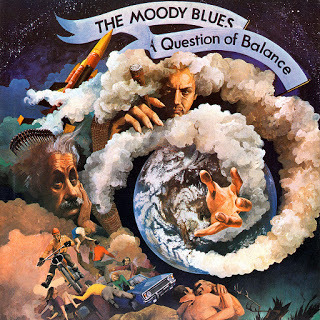 The LP is a journey, from beginning to end, in search of the chord and ephemeral whatnot. There is a heavy Eastern Philosophical influence, especially on the Mike Pinder contributions ("Best Way to Travel," "Om") and the tracks flow into each other seamlessly, making it one contiguous work of early world music. In every song, the singer yearns for something that cannot be defined. Mike Pinder's searing mellotron and Ray Thomas's soaring flute are the definitive sounds of the album, while the lyrics are a fanciful journey like Coleridge or Shelley.
The LP is a journey, from beginning to end, in search of the chord and ephemeral whatnot. There is a heavy Eastern Philosophical influence, especially on the Mike Pinder contributions ("Best Way to Travel," "Om") and the tracks flow into each other seamlessly, making it one contiguous work of early world music. In every song, the singer yearns for something that cannot be defined. Mike Pinder's searing mellotron and Ray Thomas's soaring flute are the definitive sounds of the album, while the lyrics are a fanciful journey like Coleridge or Shelley.Of course, this is the album that yielded two of the Moody's most enduring concert pieces, "Ride My See-saw" and the psychedelic "Legend of a Mind." Another standout is "The Actor," a Justin Hayward penned ballad so haunting it matches "Nights in White Satin." Then there's the lovely "Voices in the Sky," and John Lodge's epic, expermental "House of Four Doors," which samples musical styles throughout history. When I was 7, that one was key for me. Lost Chord is loaded with beautiful, experimental music. Why this band is so often overlooked, especially as a part of the Prog Rock era, I'll never know.
An aside: Other LPs bought because of their covers: the velvet wrapped Odessa, by the BeeGees, Brain Salad Surgery, Coltrane's Blue Train, Sinatra's In the Wee Small hours of the morning, Unknown Pleasures, Houses of the Holy, Captain Fantastic. Just a smattering.



